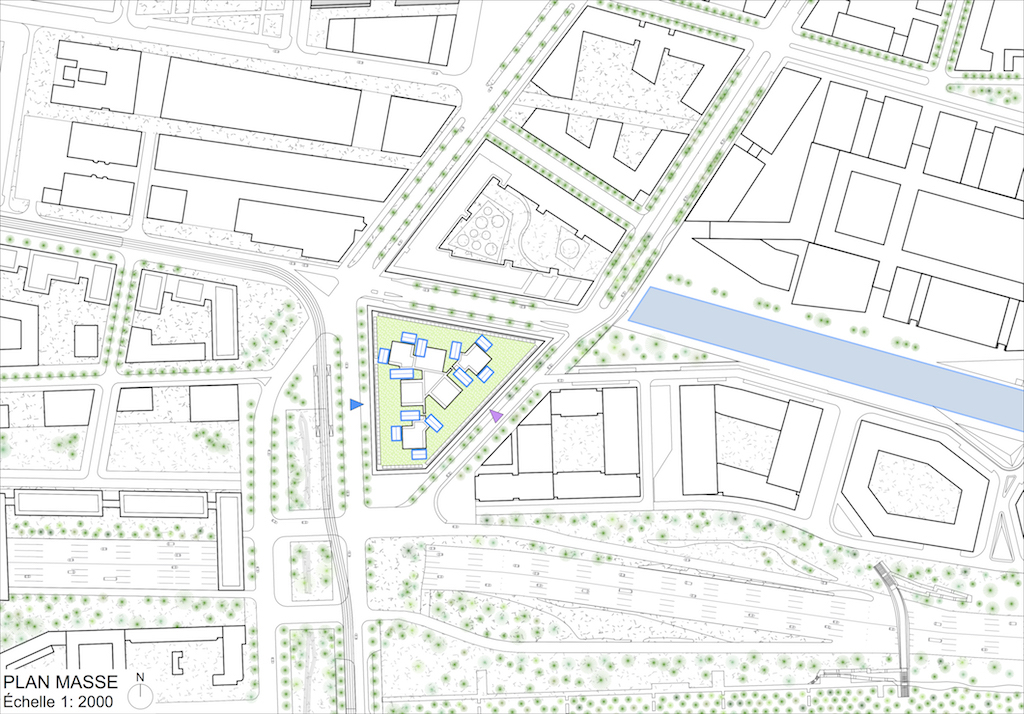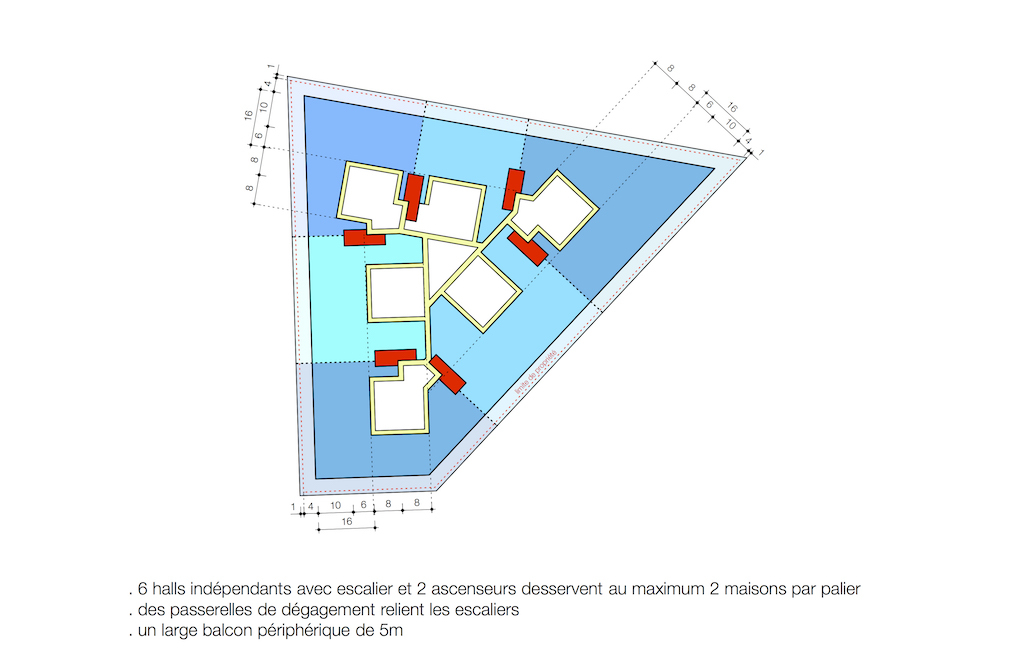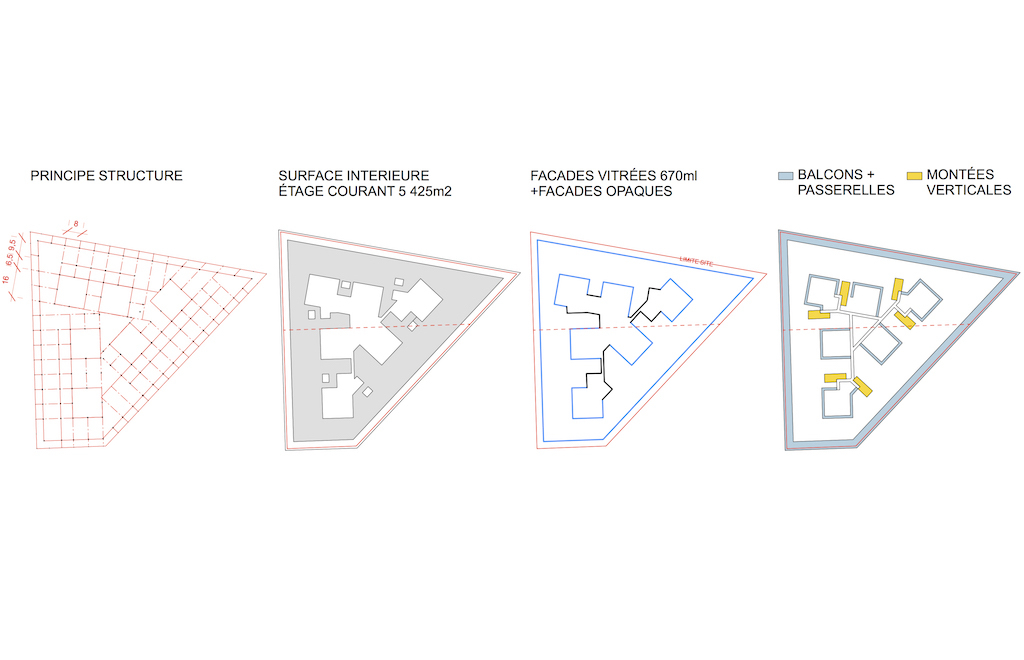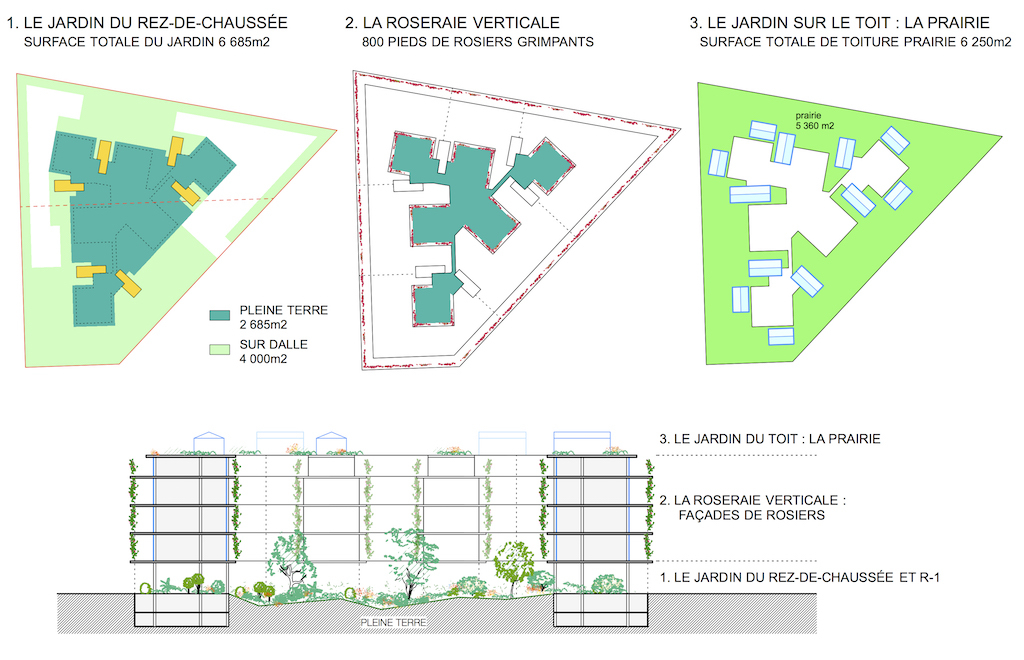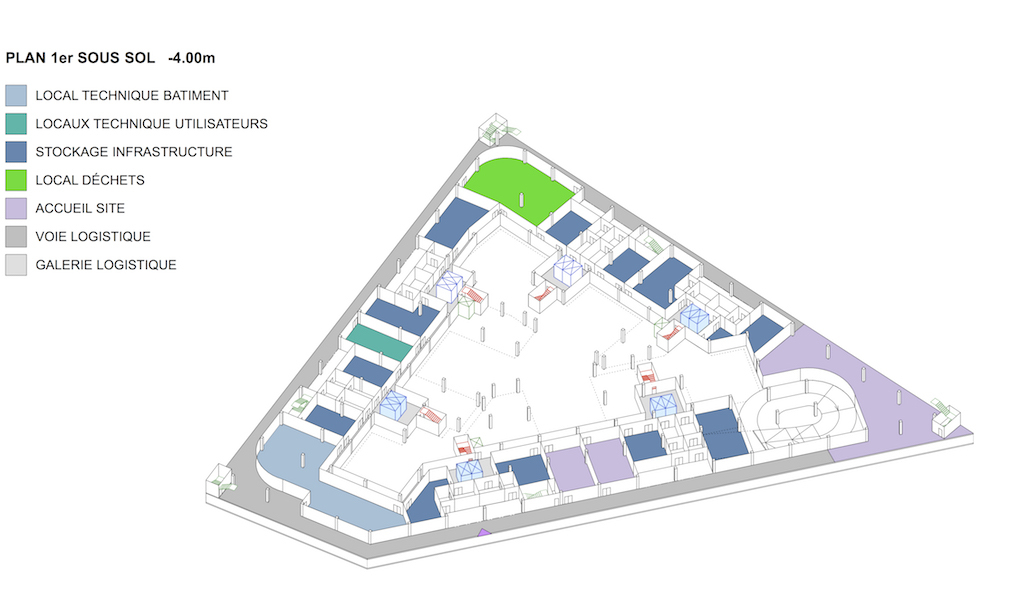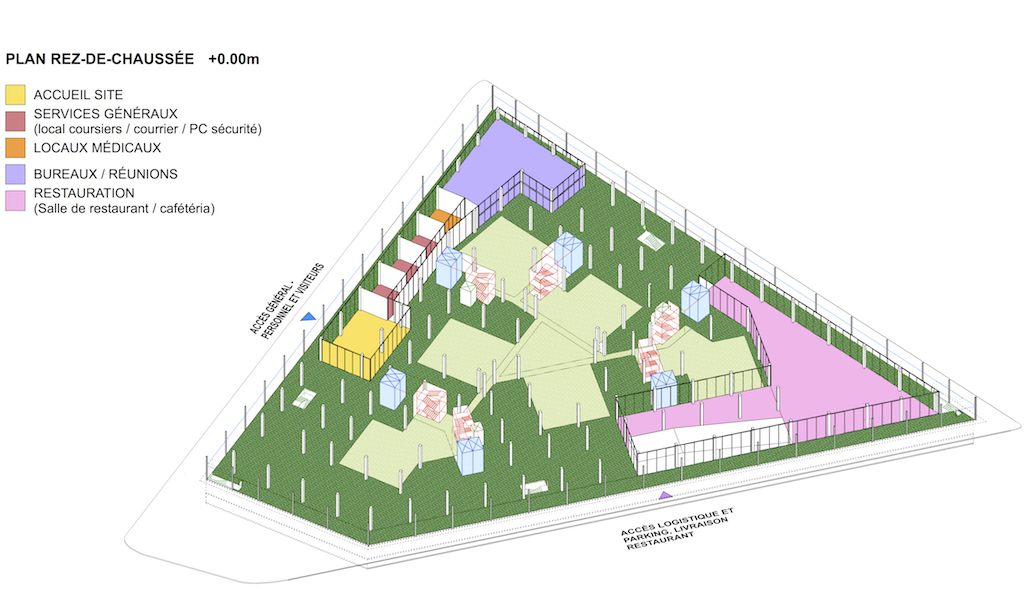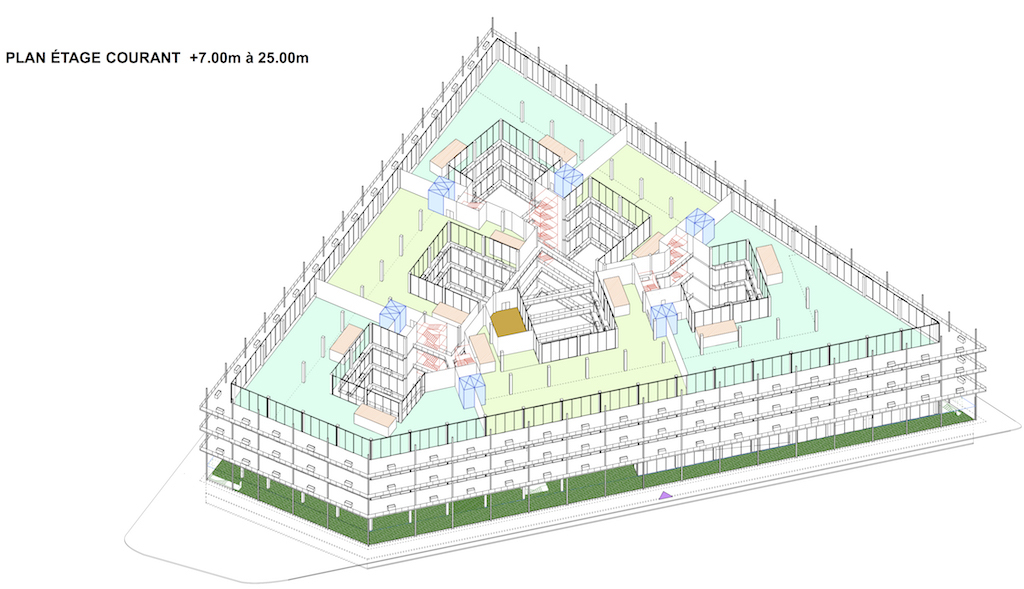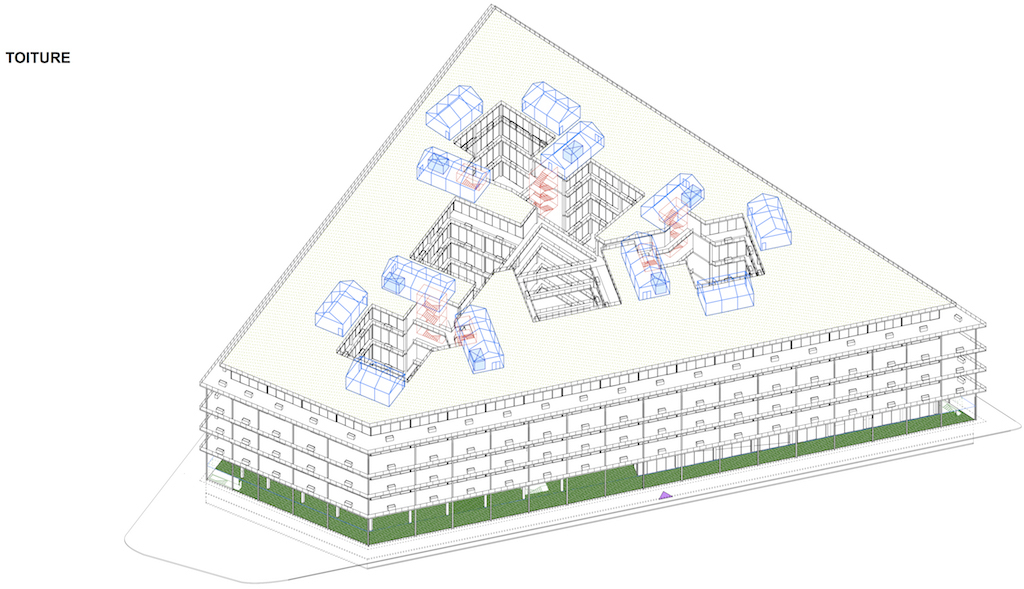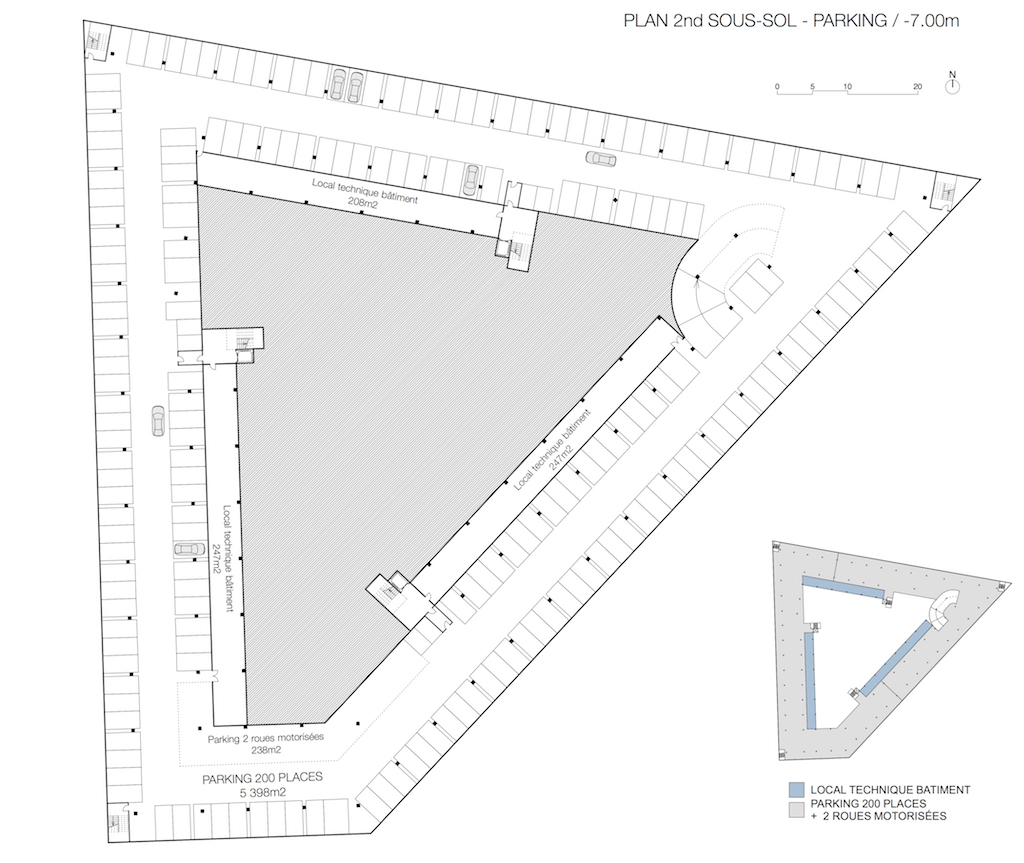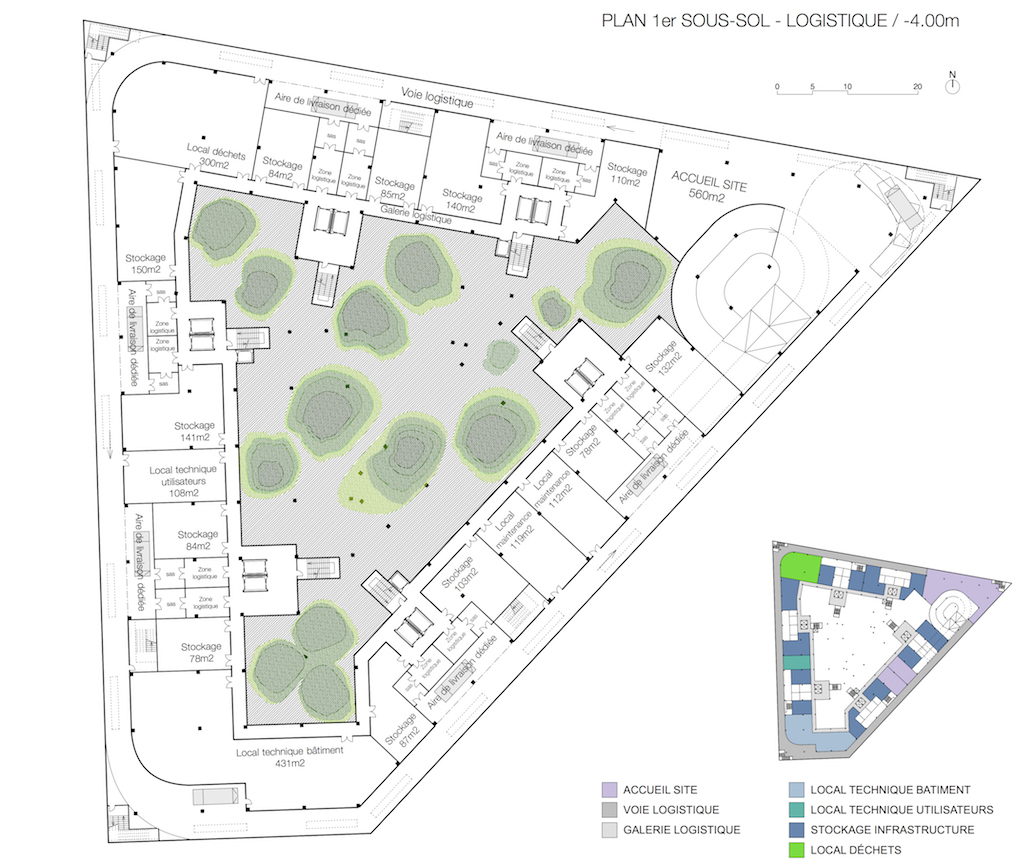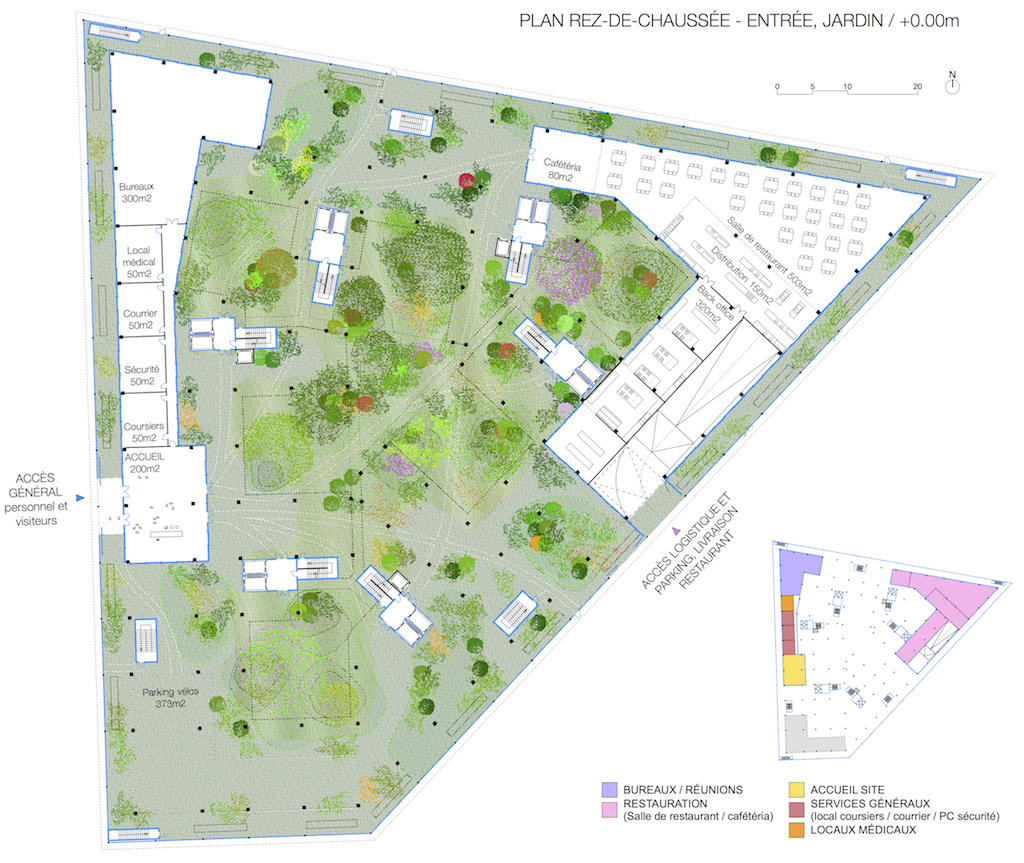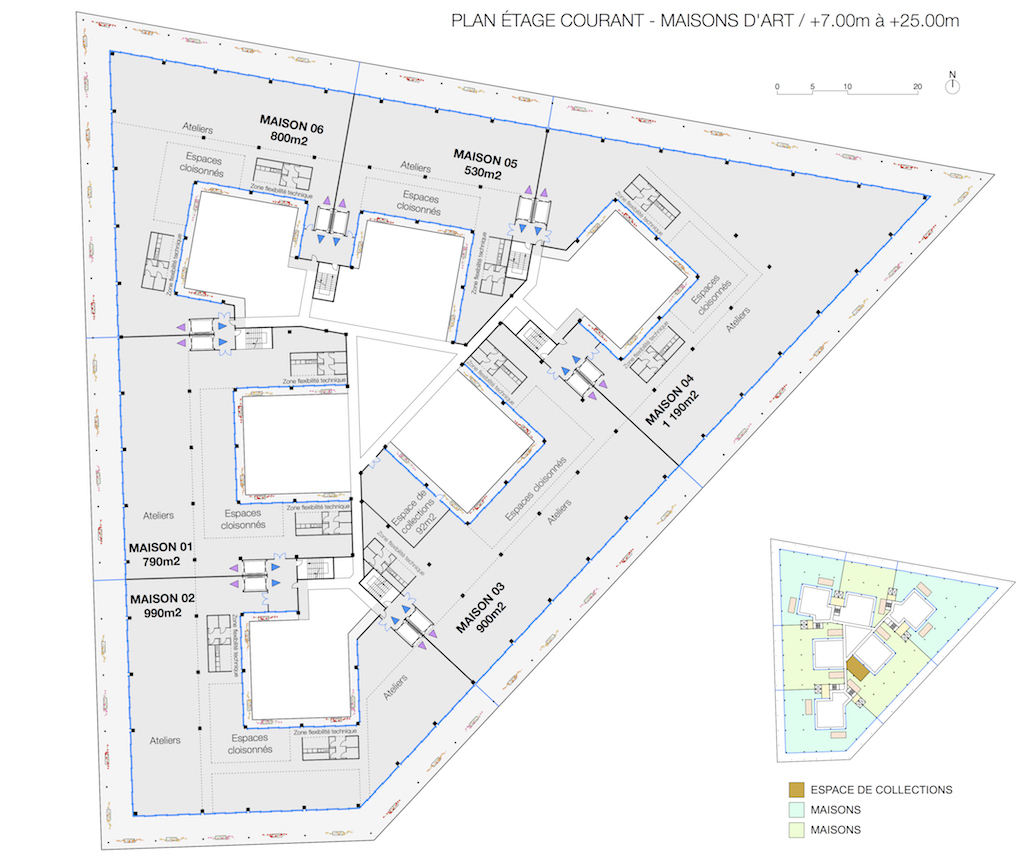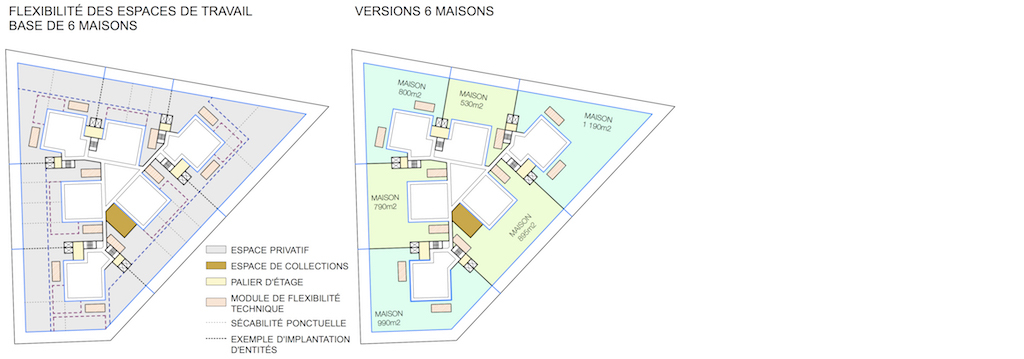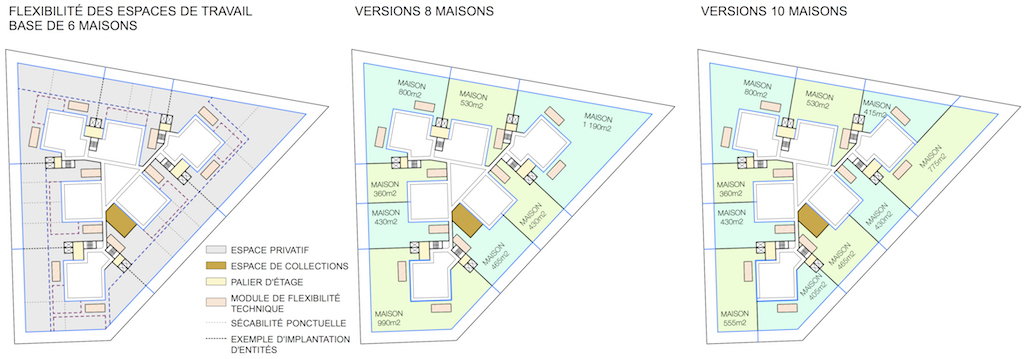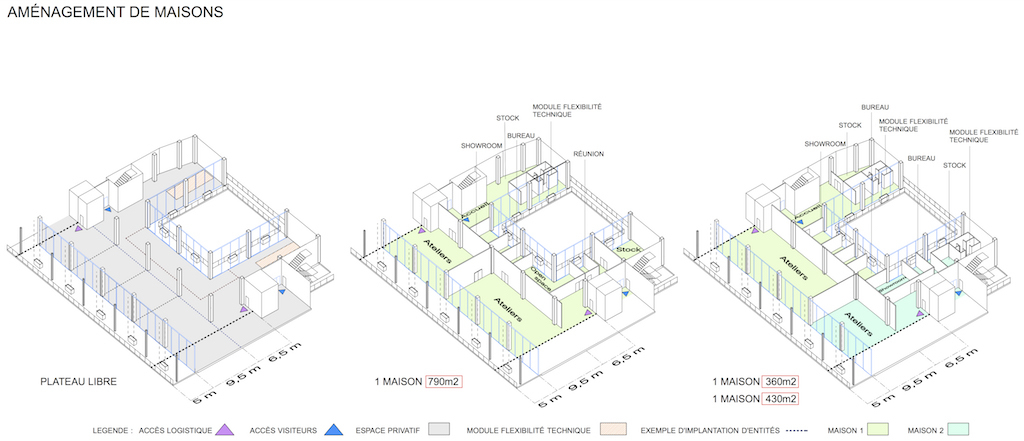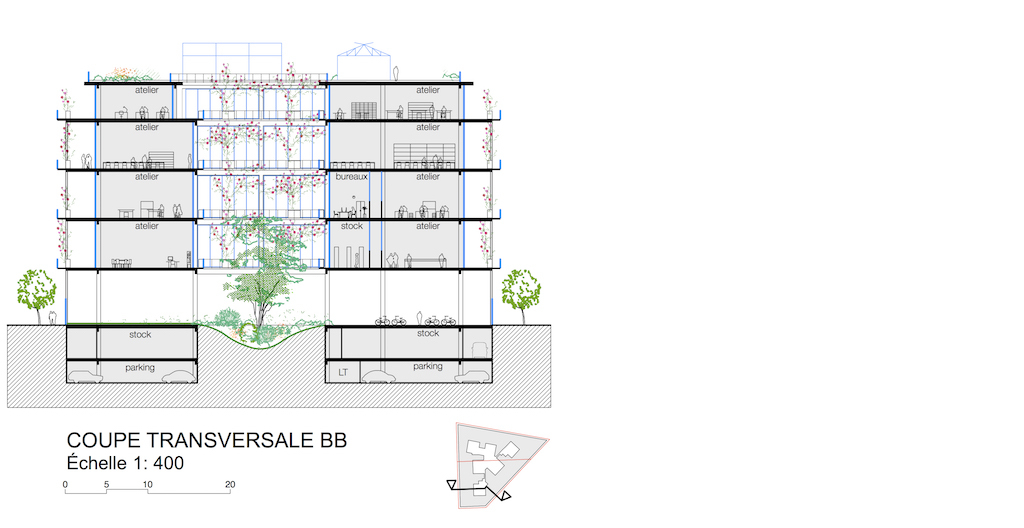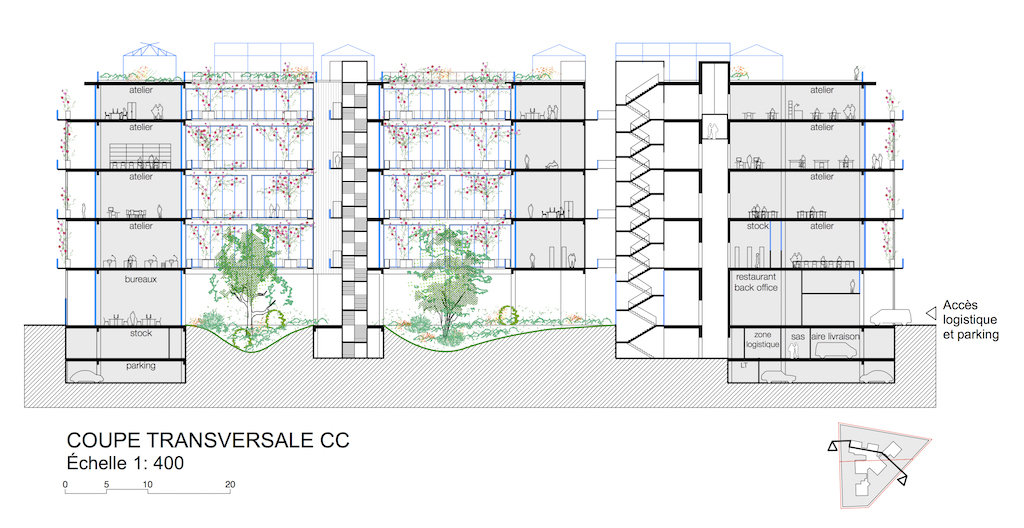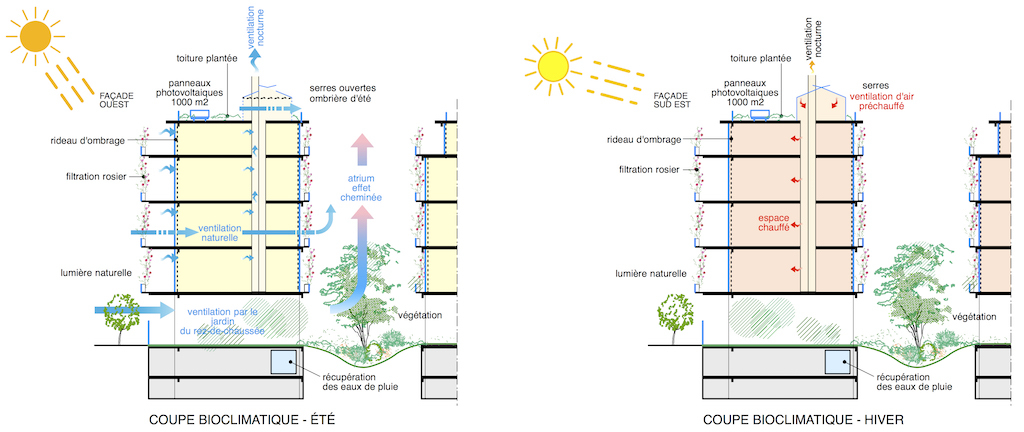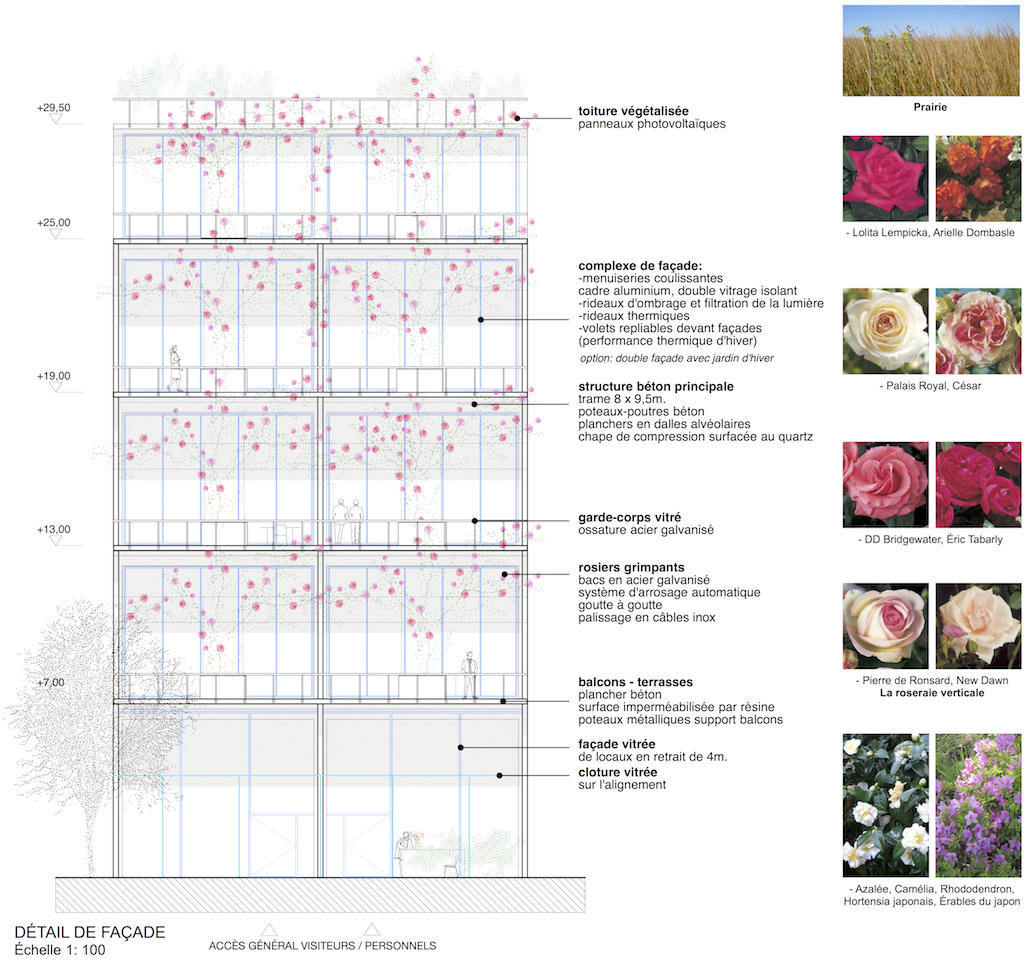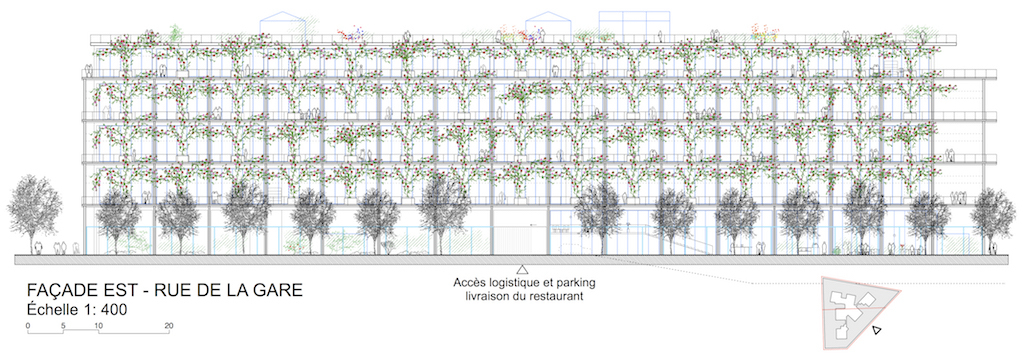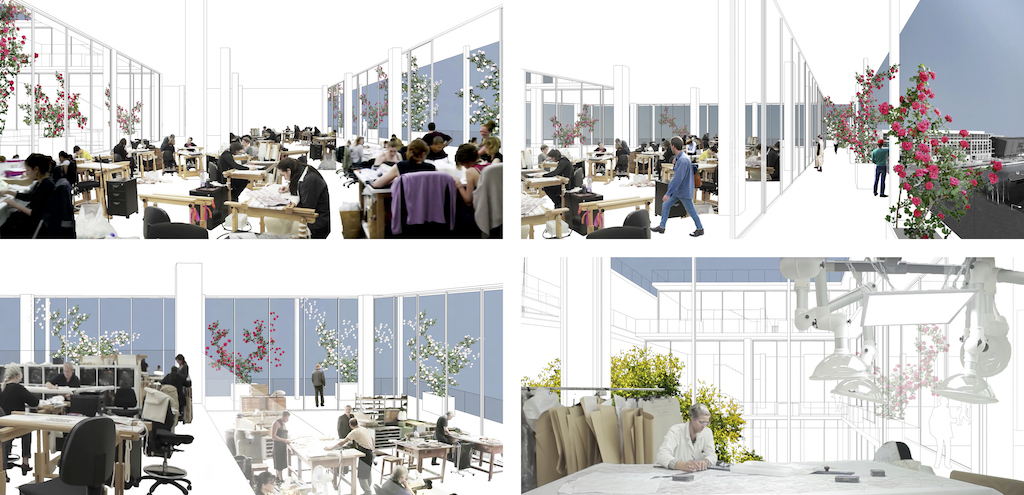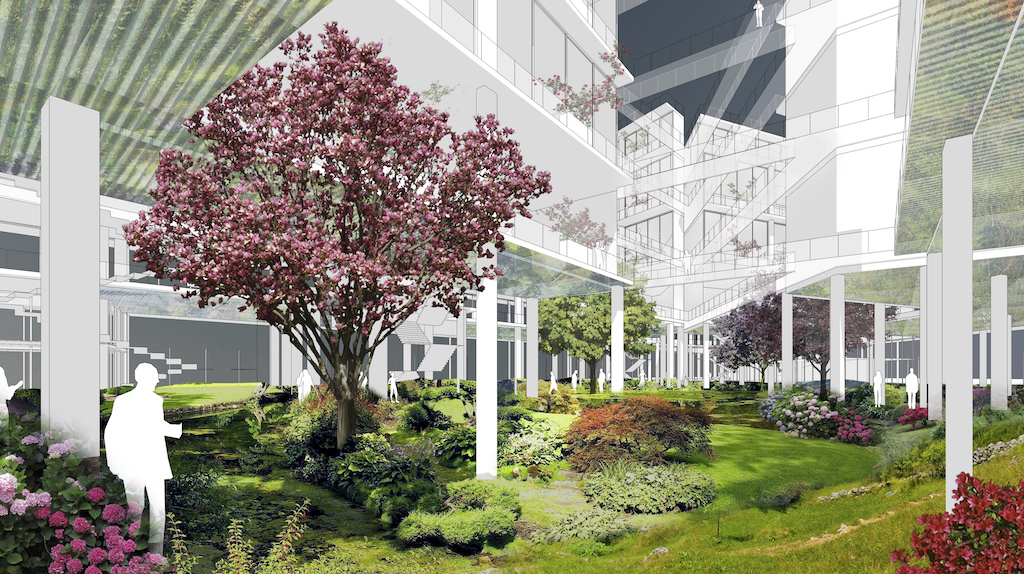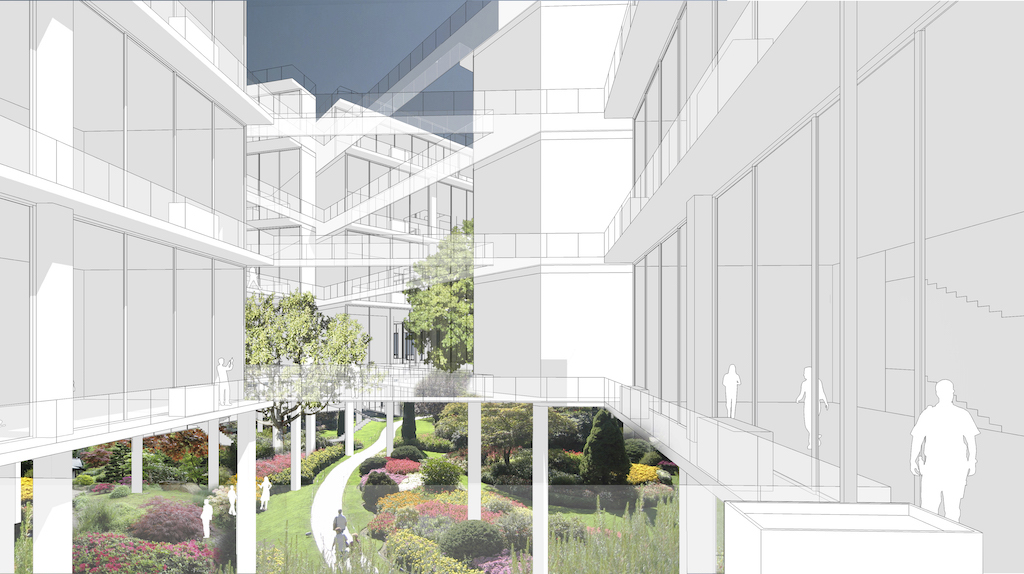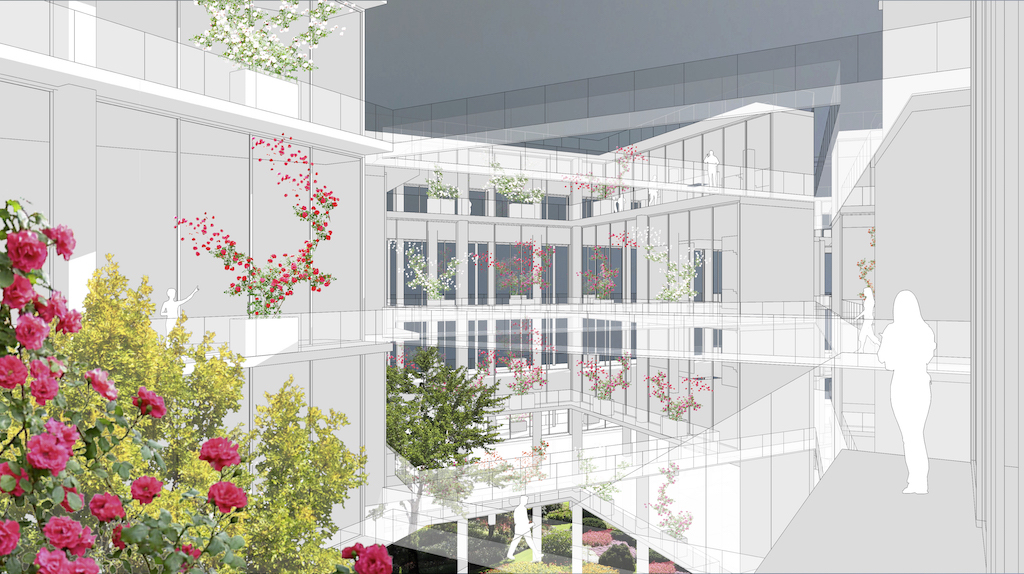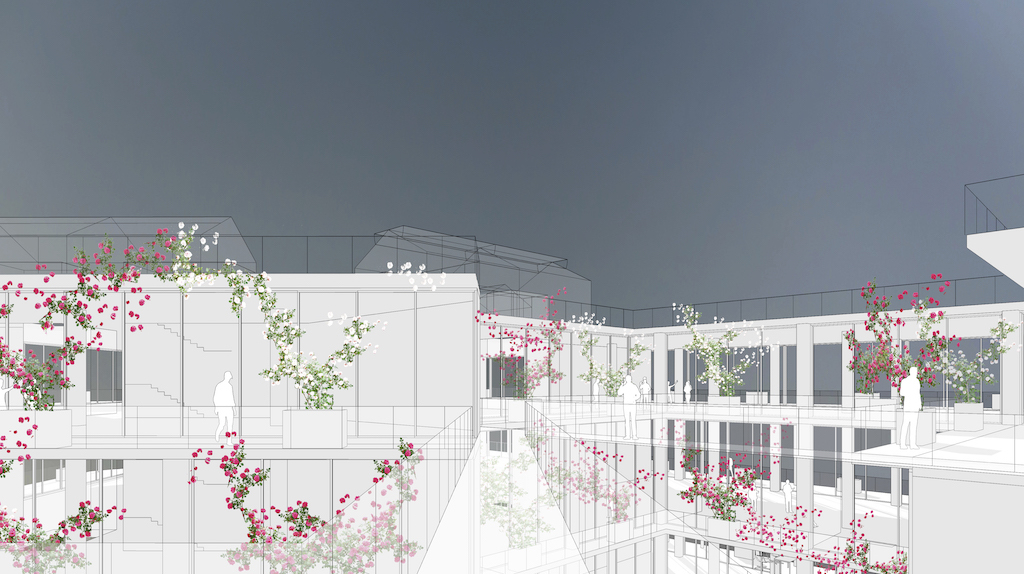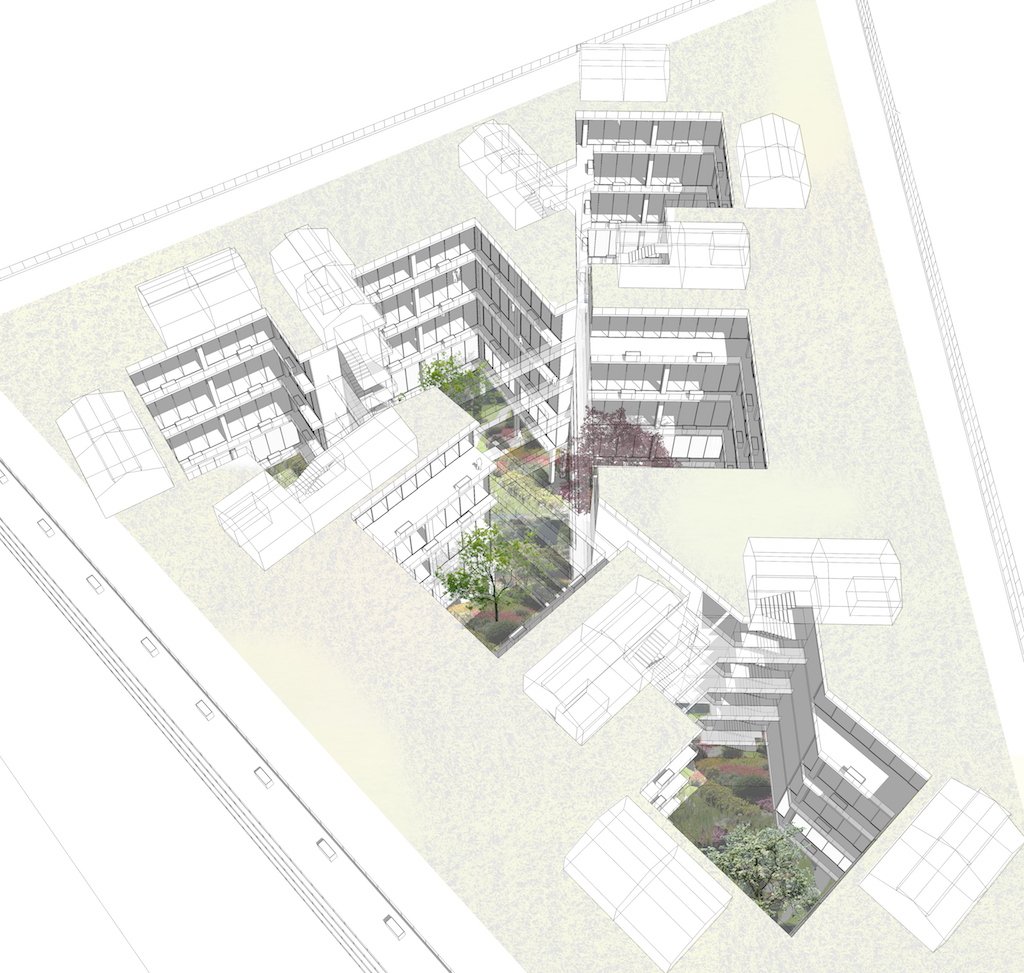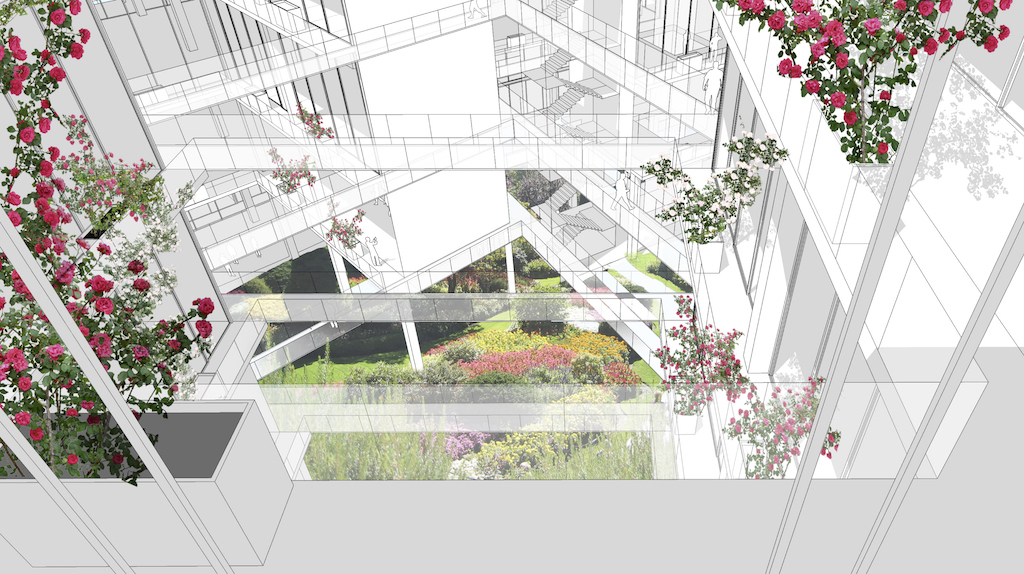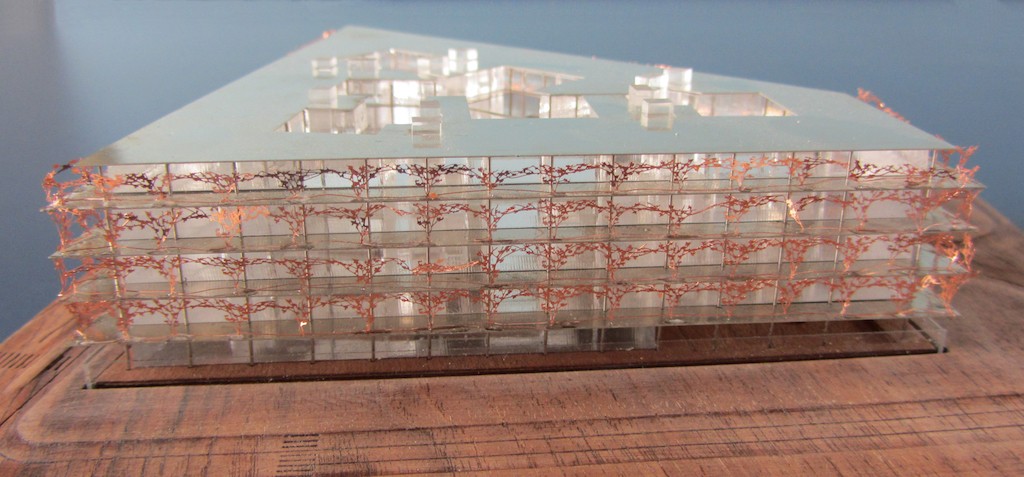Maison des Métiers d'Art is a proposal by Lacaton & Vassal developed in 2016. It is located in Paris France in an industrial and urban setting. Its scale is large with a surface of 25.395 sqm a budget of 55.580.000 € and a ratio of 2.189 €/sqm. Key materials are concrete and glass.
We are invited to consider the installation of a program of exceptional quality, rarity and diversity. The creativity, the precision and finesse of every gesture, the rigorous execution, the unique quality of each piece produced all combine to characterise the know-how of the Maison d’Art. The challenge of this project is to integrate these features. It is not only a matter of grouping 20-30 inhabited spaces but of considering how 20-30 times one of these spaces might be configured in an agreeable, generous manner with ease, comfort, freedom and the necessary pleasure. While benefiting from a common framework, services and facilities, each one must develop a particular activity, a know-how, an independent and personal character. The term “house”, beyond referencing a very particular activity, a certain know-how and a tradition, also evokes the idea of inhabitation, working under good conditions, liking work and the workplace, having fun and feeling happy and free.
This is a building made up of individual inhabited spaces (reference the following structures open to appropriation; L’immeuble-Villa by Le Corbusier or the High-Rise of Homes by James Wines of the group SITE). It is not an Industrial Hotel, even if we have looked for a similar capacity and spatial and functional efficiency. It is not a building made up of individual offices. In this sense, the project for us stands out from neighbouring buildings such as the future headquarters of the Veolia Group. A reference to the Parisian block structure comes to mind when characterising the spirit of these “Houses”. Each one has its own frame, internal and external space and ground space. The project sets up a system of construction that is as generous as possible, ensuring :
– Within the framework of the urban regulation and the prescriptions of the urban plan;
– The maximum capacity: in volume and in surface area (corresponding to the demands of the programme)
– A very high structural strength
– A great ease of use in terms of thermal comfort and atmosphere
– Abundant amount of natural light that is easily controlled
– Pleasant and convivial atmospheres
– Ease of maintenance
– Maximum freedom
These elements assure that, beyond the initial installation of the programme, there is a possibility for both short term and long term flexibility.
Project
The building consists in four levels above ground along with two additional basement levels. It is located at the outer limits of the site. The “Houses” are situated around a series of yards in the four upper levels and are connected with walkways. The yards (16m in length) define semi closed voids in the middle of the “Houses” and create a spatial relationship between them. The ground floor is occupied by a large garden in which shared gathering spaces are installed : reception, offices, catering, access halls to houses and access to basement for delivery and parking. The block is enclosed with a transparent fence that materialises the façade on the street at the boundaries of the site.
It delimits and protects a large garden that is open at the centre of the block and is partly under the building that rises 6m above. The common spaces at ground floor level are 4m set back from the fence in order to create a space in front of the facade and to avoid a direct relationship with the busy streets that border the block. Access halls to the inhabited spaces are accessible through the garden, from the reception. From the first floor, the “Houses” are set up on four levels. These floor planes are served by 6 independent halls, each with a staircase and two lifts, allowing flexibility in dividing each floor and a variety in configuration. Each hall serves a maximum of 8 “Houses”, 2 per level. Each floor place has a height of 6m (5,60m free sub-floor) for the first three levels and 4,50m for the last level, aligning with the maximum height of Aubervilliers. Nevertheless, it would also be possible to set the height of the last level at 6m if Article 10.2 of the Aubervilliers PLU was applicable. This would allow the possibility of a height exceeding 3m in order to facilitate a connection to a neighbouring building.
At the edge of the building, the facades are set back 4m from the boundary. The floor extends 1m past the boundary, creating a 5m terrace in front of the façade. On these terraces, climbing rose plants will be planted in vats with the intention of creating a vertical rose garden. This terrace has several advantages:
Comfort:
– Acoustic: it creates a recess from the busy roads that surround the site, the sub faces are used to absorb the surrounding noise.
– The shading created on the façade by this large overhang is very beneficial to comfort levels in Summer whilst also regulating brightness.
– Given the prominent location of this site within the context, it creates a visual filter to the urban environment.
– A private exterior space in front of the work spaces
There are two basements located at the edge of the site for parking and logistics. Vehicle access from Rue de la Gare is by closed ramp, integrated into a built volume.
Quality of atmosphere and environment
The architecture of the project is based on the creation of three gardens:
A garden at ground level, common to the houses, occupying most of the ground floor. It is a half shaded garden, partly open air at the centre. It will be planted with a variety of flowering shrubs that are suited to half shaded conditions: camellias, rhododendrons, hydrangeas, azaleas. High stemmed trees will be planted in the centre of the courtyards with the intention that the light foliage filter the light : Japanese maples and Japanese cherry trees. The soil will be undulating, forming small depressions in order to both multiply habitats and promote wetlands and water harvesting. Sheltered paths through the garden will be created allowing access to the halls.
A vertical rose garden will be created through the planting of climbing rose plants in vats on the balconies at each floor. Piled on cables 2m above the ground, they will form a light mesh in front of the façade. They will be in flower from April- September, creating a slight shadow on the terraces along the façade, an asset in the Summer sunshine. The roses might all be of a specific variety or might come from the collection of Meilland roses. There will be a 30cm thick natural meadow situated on the roof. These gardens create both a horizontal and vertical plant continuity that favours biodiversity and plays an important role in the quality of the environment, the internal comfort and the pleasure of occupants. However, it also acts as a filter to the very urban surrounding context. The building is visually very exposed due to the location of the site and so, the gardens create an intimacy, a sense of interiority and space that is calm.
